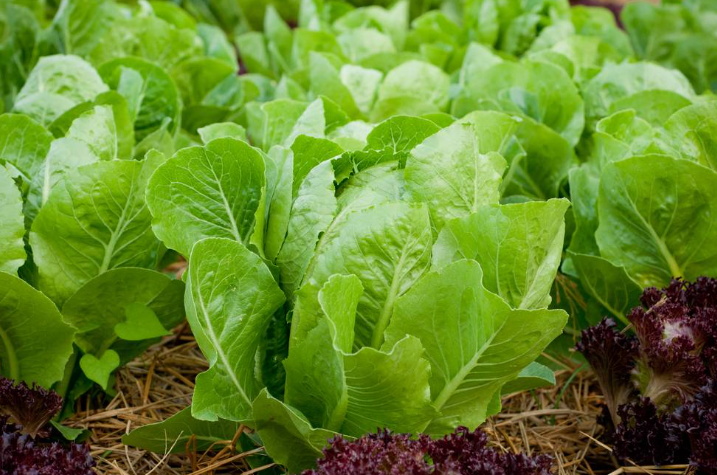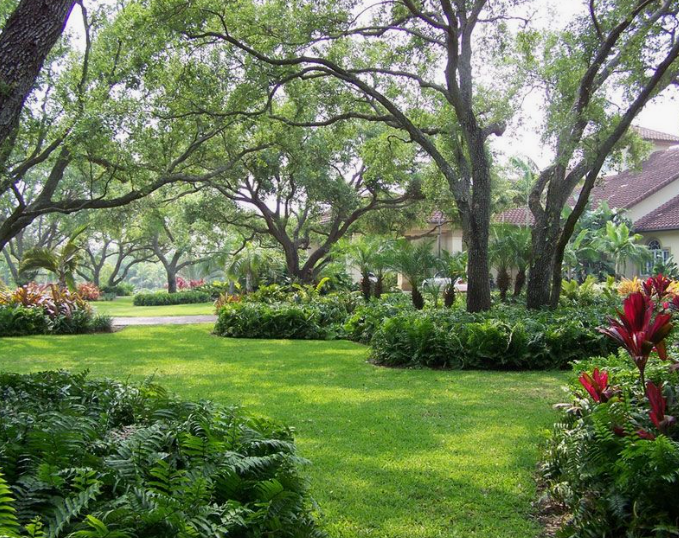Can You Grow Lettuce in the Shade?

Is a building or a tree shading your garden or backyard? Are you interested in starting to grow some simple vegetables like lettuce but worry they won’t get enough sunlight to thrive and flourish? Well, have no fear – lettuce is one of the easiest crops to care for and thrives even under shade conditions!
When growing vegetables, one general guideline applies: crops which produce fruits or roots do best in full sun while leafy greens such as lettuce can tolerate and even thrive under shade conditions. This holds true not only for lettuce but for other varieties like cabbage, mustards, mizunas, arugula, spinach and sorrel as well.
Can you grow lettuce in the shade? Lettuce is an ideal cold-hardy crop, preferring temperatures on the cooler side and doing well under partial shade conditions. In early spring, full sunlight helps promote faster growth; if temperatures become too hot however, bolting may occur; partial shading helps prevent early bolting during the hotter summer months.
How Much Sunlight Does Lettuce Need?
While lettuce can tolerate some shaded areas, you must know whether that area provides full or partial shade when growing it in order to ensure the best growth results. So what exactly are the differences between full shade and part shade in terms of gardening terms?
Full shade areas receive only 2 to 4 hours of direct sunlight daily; Part shade locations receive between 4 to 6 hours of direct sunshine daily, typically early morning sun.
can you grow lettuce in the shade? Lettuce requires at least six hours of direct sunlight daily to thrive, though less exposure may suffice. A partially shaded environment works best. Keep in mind that lettuce seeds require some light in order to germinate properly. Therefore transplant them instead of sowing directly in the shade.
What happens if I expose lettuce to full sun? Initially, its heat can only benefit most plants, including lettuce. Everything seems to grow more vigorously during spring. As days lengthen however, lettuce begins to focus its energies into growing its stalk and producing flowers instead of making edible leaves, an undesirable process known as bolting.
Can You Prevent Lettuce From Bolting?
While lettuce will grow under most conditions, shade can often help prolong its bloom. Many gardeners use their sunniest spots for heat-loving plants while saving shadier corners for fast maturing leafy greens that bolt quickly when exposed to heat of summer.
Bolting of lettuce can often be traced back to temperatures exceeding 70degF (21degC). Lettuce is a cold-hardy crop, performing best between 55 to 65degF (13 to 18degC). Any temperatures exceeding this point could trigger some cultivars to go to seed, though we can delay this inevitable process by using mulch, shade or choosing bolt-resistant varieties.
Bolting can also be caused by day length. Lettuce is a long-day plant, meaning that as days lengthen it will produce flowers as more sunlight hits it.
Planting lettuce in shaded areas during hot months will prevent it from going to seed and may slow its development; however, baby lettuce would still be better than none!
How Can Shade Lettuce in Summertime?
Now that we understand that shade – particularly partial shade – can be beneficial in our gardens, how can it be utilized to grow lettuce during its tender summer growth stage Can you grow lettuce in the shade?
1. Interplant lettuce in between taller plants.
Whether you’re growing lettuce for heads or leaves, it’s a quick maturing crop. Most lettuce varieties will be ready for picking in 45 to 55 days. Sow them in between tall, stalky plants, like peppers, tomatoes, kale, broccoli, etc. The lettuce seedlings will get enough sun during the early summer months, but soon enough, the neighboring plants will grow a dense canopy of leaves. This will protect them from the heat and slow down the bolting process.
2. Leverage the shade from trellises.
Vertical gardening is great for increasing productivity in small spaces. Climbing plants like cucumber, squash, or beans get better airflow when grown on trellises, and the added advantage is that they cast shade when it matters the most, anywhere from June to September.
Plan for the shade cast by these structures and sow or transplant your lettuce in sheltered areas: you can place them at the base of a bamboo teepee, underneath a cattle panel arch trellis, or under the heavy shade of a pallet trellis. Lettuce will make a great ground cover, keeping humidity levels in check.
3. Follow the shade cast by your structures.
Judging by the amount of shade we see in the spring or winter months, we falsely assume that some corners of our garden are completely shaded at all times. But as the seasons progress, the sun’s angle changes by 50%, and many shaded areas start receiving full sun in the summer months.
If you have permanent structures in your garden, like a fence, a shed, a tall tree, or a neighboring wall. Observe the amount of shade they cast in the summertime and even keep a log of how many hours of direct sunlight they get. Can you grow lettuce in the shade? This way, you may avoid sowing lettuce in an area that’s shaded in spring but completely scorched in summer.

4. Use shade cloth to protect your lettuce plants.
You can protect your lettuce from too much heat by creating a supporting structure and covering it with shade cloth. You can build your own DIY frame using PVC pipes or buy tall hoops for adequate support.
Shade cloth cuts down on UV penetration while at the same time allowing rainfall to pass through. It keeps the shaded area significantly cooler while also keeping birds away. Professional shade cloths are lightweight and dark in color. Choose a 60% density shade cloth for protecting lettuce.
A cheaper alternative for shade cloth is burlap or a dark sheet of cotton. They offer less UV filtering but make good options if you have them around the house.
5. Grow lettuce inside containers that you can easily move.
Lettuce is a shallow-rooted plant, and it can be grown easily grown in containers. This way, you get the best of both worlds – you can move those containers around to follow the sun when the seedlings are growing and set them in the shade to prevent them from going bitter when it’s time for harvest.
Grow lettuce plants on your patio, terrace, or balcony. If you have some potting mix, water, and a few hours of sunlight, then you can grow lettuce – and so much more. If you’re short on space, you can grow your own lettuce tower – check out these amazing vertical structures that are perfect for growing greens, strawberries, herbs, and other shallow-rooted plants.
Lettuce Cultivars That Are Bolt-Resistant
Lettuce is such a staple in our diets that we just had to find a way to make it last all summer. Enter: the bolt-resistant lettuce varieties. Whether it’s looseleaf, butterhead, crisphead, or romaine, you can test these seeds and enjoy fresh lettuce leaves or heads all summer long:
- Looseleaf: Red Salad Bowl, Green Salad Bowl, Lollo Rossa, Lollo Bionda, Oakleaf Looseleaf, Bronze Arrow Looseleaf;
- Crisphead: Sierra Batavian, French Batavian;
- Butterhead: All Year Round Lettuce, Merveille De Quatre Saisons, Adriana, Capitan Bibb;
- Romaine: Jericho, Coastal Star, Salvius.
Despite being bolt resistant, many of these seeds won’t germinate in the heat of summer, so find other ways to get them to sprout. I start them indoors under grow lights where I can control temperature and humidity levels even in warmer months.
Are Seed Potatoes Different From Regular Potatoes? Find Out!
Final Thoughts
Can you grow lettuce in the shade? Don’t be afraid to use shade to your advantage when growing lettuce. It keeps your lettuce plants fresh and tender for longer. Learn to maximize any shade you get in your garden during the summer months for growing all kinds of leafy greens.
The shade will also make your lettuce plants crisper when it’s time for harvest. Never pick lettuce at noon, when the plants are wilted and dehydrated. Instead, harvest lettuce leaves or heads in the morning or on an overcast, rainy day.
Ciara Konhaus

I’m Ciara and I’m a gardener and agricultural educator in zone 6b. I’ve farmed and gardened all over the Appalachian mountains and love to empower people with the tools they need to start their own gardens.
